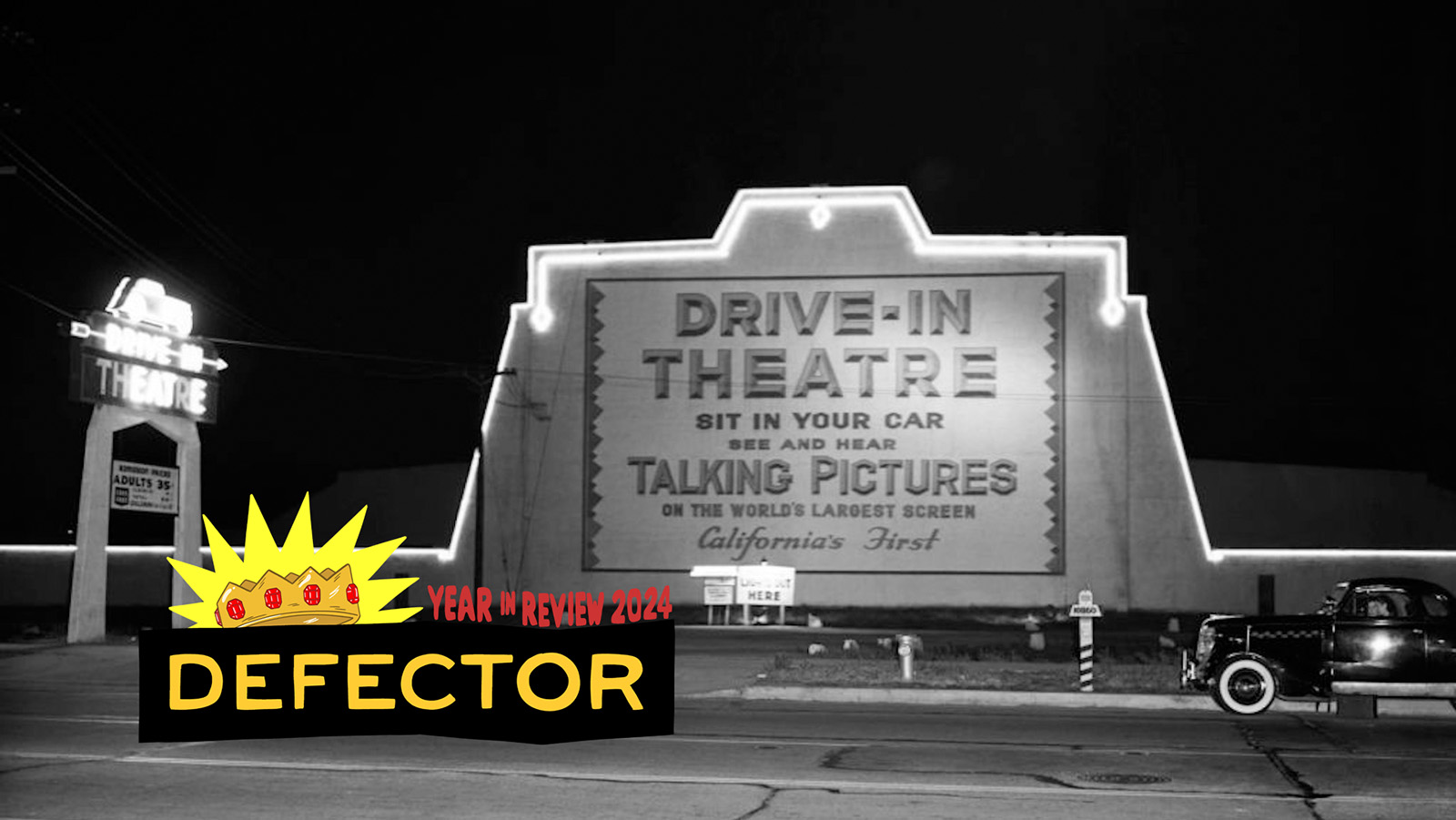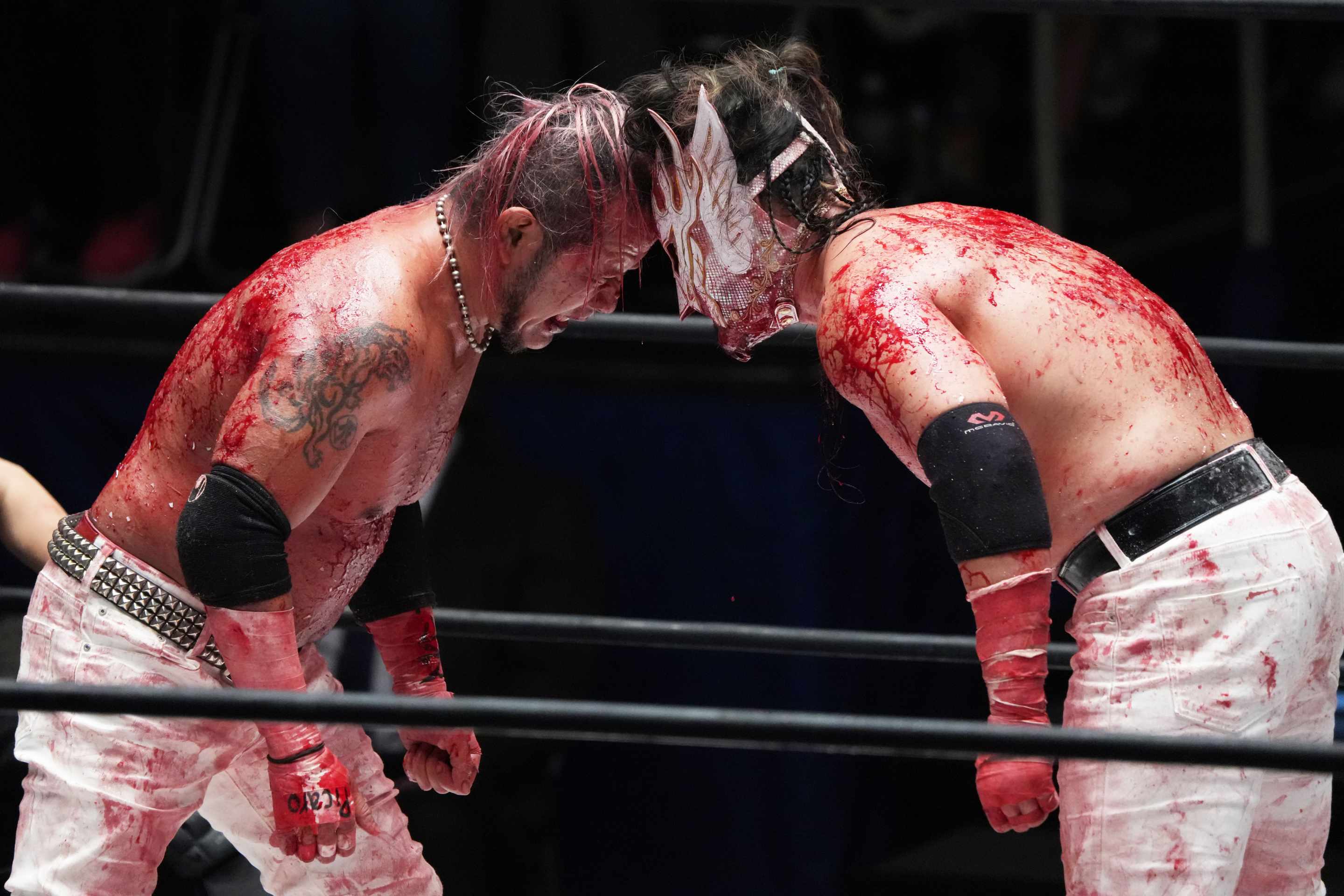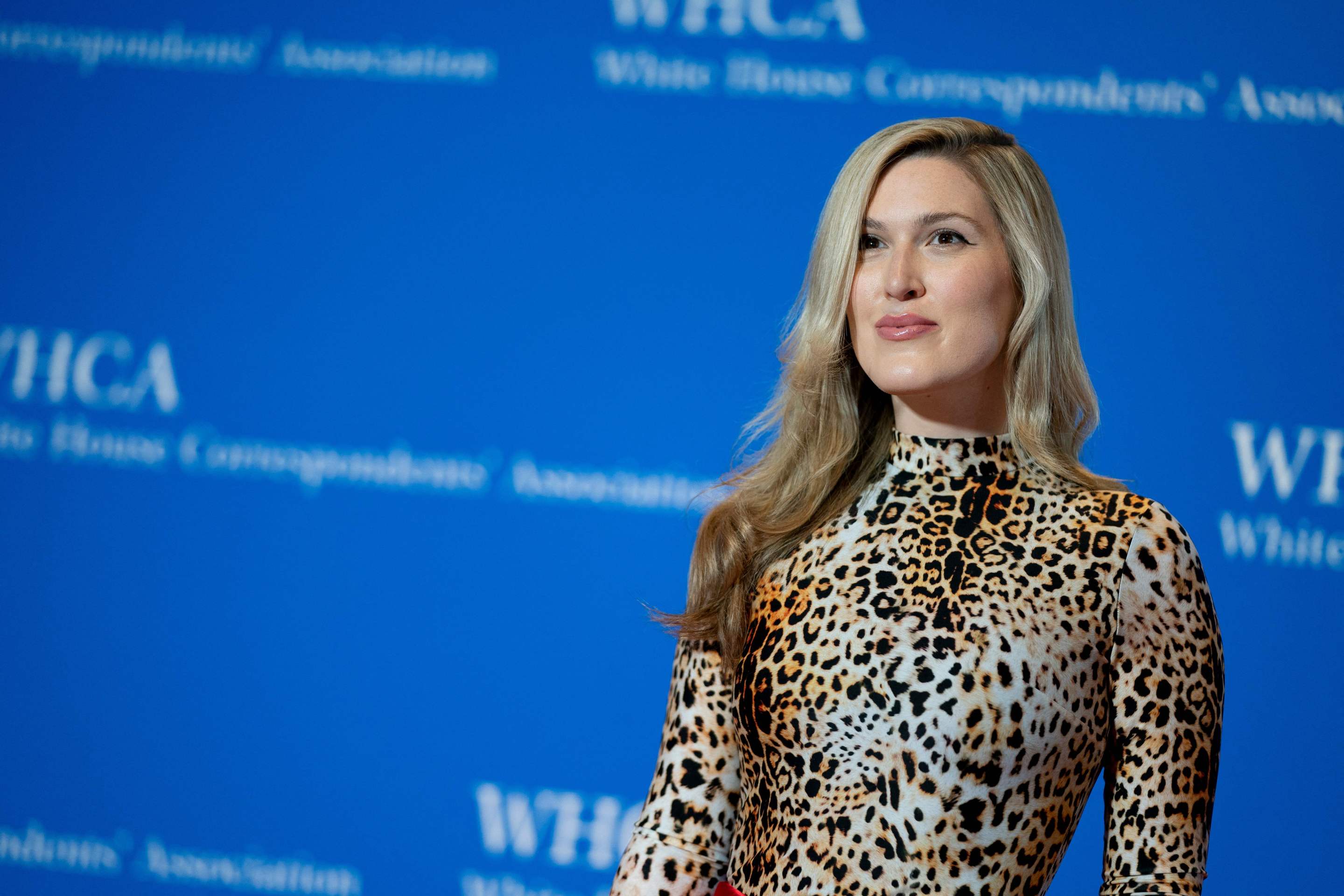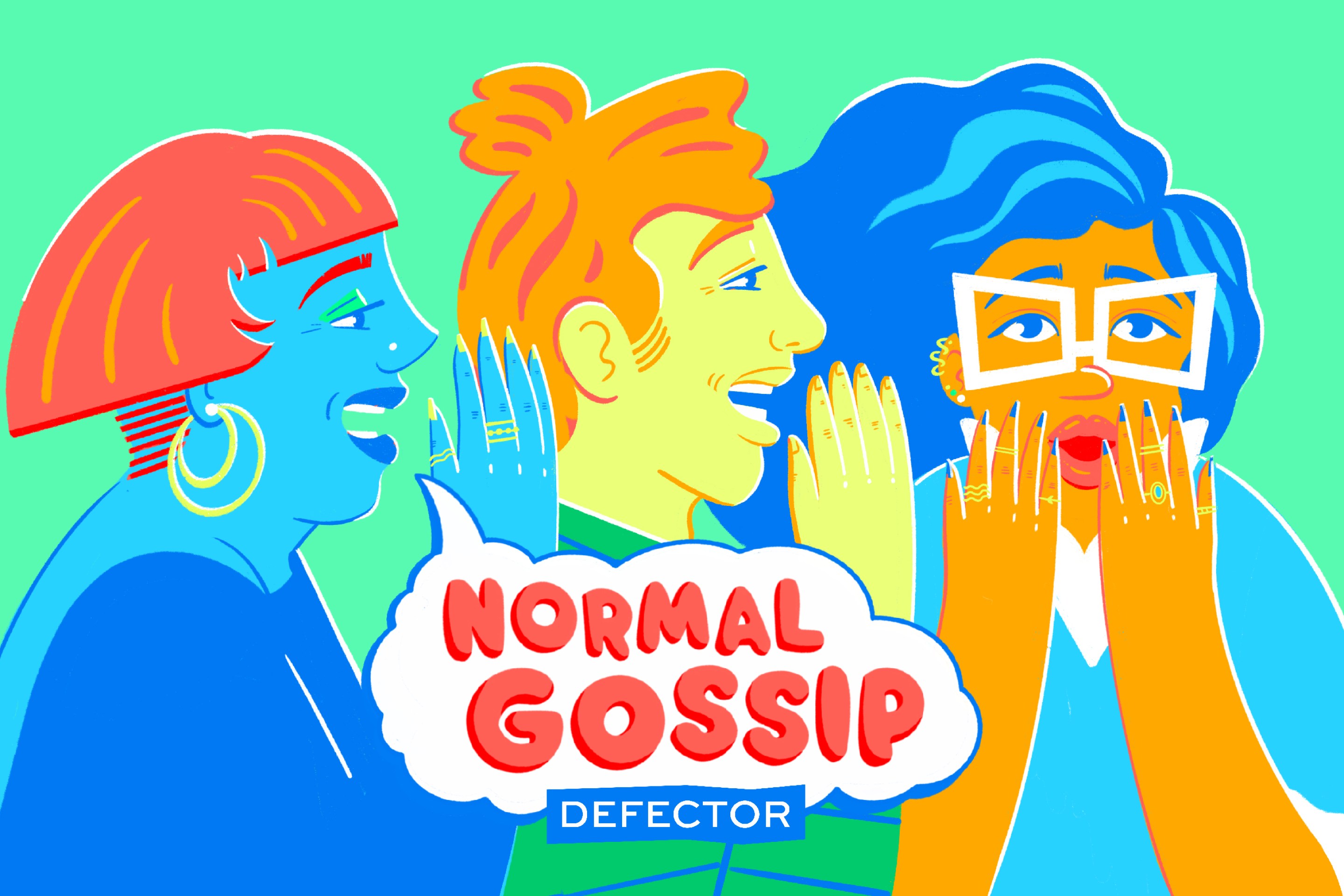This is what the Defector staff saw and enjoyed this year.
The Monterey Bay Aquarium Rocked My Shit
I can’t remember the last time I went to an aquarium prior to this year—probably around a decade ago, if not longer, when I was just old enough to be bored by the concept. This August, my friend and I conducted our inaugural Philly-SF doubleheader, where she would come visit me in Philadelphia before we both fly back to San Francisco, and we would do similar activities in both cities. This combined with my desire to ride PATCO was how I wound up in the Camden Aquarium for the first time, which was fun in part because it was very kid-oriented: bright signs and hip-level plaques. We even got to see the hippos, whom the staff referred to as “our ladies,” be fed various vegetables.
While I maintain the general superiority of the East Coast, I’ve come to realize that my prejudice against the West Coast more generally and California specifically has unfairly weighted Los Angeles—quite possibly the worst city on Earth—too highly in its calculus. I’ve been to San Francisco twice now as an adult, and being there makes me feel so good that I can’t let myself think too hard about it. I love my friend and their family, and I have developed a begrudging fondness for Muni and BART. I am not immune to temperate weather or the Giants' ballpark, even if hills are evil.
Before flying to San Francisco, I told Patrick Redford, famously from the Bay Area, that I was going to the Monterey Bay Aquarium for the first time, and he promised me that it would “rock my shit.” We left shortly after 7:00 a.m. on a weekday to take the scenic highway—a new concept to me—to Monterey, arriving just in time to watch the sea otters receive their enrichment for the day.
As an adult I've found there's a specific joy in being able to appreciate things that you know you wouldn’t have fully grasped as a child. I liked learning about the conservation work the facility did, and the sea otter foster program. I was genuinely overwhelmed after walking into a dimmed room with a school of mackerel warping about a floor-to-ceiling tank. I met some plovers. As part of the deep-sea exhibit, we got to meet these giant marine isopods. The man behind the tank asked us, “Aren’t they cute?” and we said, “They are!” We stuck our hands in the cold water and petted them carefully with two fingers and bravely resisted the urge to give them pats on their little heads. Outside, the beach was closed because it was sea lion season. They were packed tightly like logs along the beach, and sprawled out all over the dock and parked boats. It smelled crazy out there.
Afterward we drove down to Point Lobos to look at the tide pools. After some careful navigation across algae-covered surfaces and befriending some hermit crabs, a kid came down the side of one of the big rocks beside us. We mentioned that we saw some hermit crabs, and he told us that there were at least three crabs in a hole on top of the big rock. We thanked him for the intelligence, climbed over the rock, and confirmed his report. Just before we went back to the car, I slipped on a particularly slick rock and got algae all over my jeans. I didn’t even mind.
Second place goes to Michael Clayton, which I watched for the first time this year and rewatched maybe four more times in the weeks following. Good movie. - Kathryn Xu
Godzilla Minus One
It’s trite to say this is the first Godzilla film that makes you care about its human characters, though it’s also true. It’s bromidic to observe that this one serves as a metaphor for Japan’s postwar guilt, as previous entries have for fears of nuclear war, environmental decay, and sclerotic disaster response. All that needs to be said about Minus One is that it’s the best Godzilla-as-movie ever made: gripping throughout, perfectly paced, well-scripted, effects that only add and don’t detract, and the scariest version of the monster yet. Show this to someone who doesn’t care about Godzilla and they’ll enjoy it, which is something you can’t say for many others in the series; to a fan, it’s heaven. - Barry Petchesky
La Chimera
While I loved Josh O'Connor's performance in Challengers, I was amused to see the (horny) world at large exult (hornily) that he was this genius little mousy guy based on that (horny) movie, when he also starred in and was even more charmingly murine in La Chimera. Both films and their Italian directors use his physicality opposing ways; Luca Guadagnino draws O'Connor as a slinking bad boy whose louche sexual charisma is so baked into his persona that he's seduced even himself, while Alice Rohrwacher drapes him in a rakish tan suit that hangs off his emaciating and increasingly grimy body throughout a movie spent smudging his face in dirt. Rohrwacher's movie is for the real mouseheads.
The plot of La Chimera is simple: A rowdy gang of country dipshits led by a man named Arthur (O'Connor) excavate and fence lost Etruscan artifacts. Set in the countryside of Italy in the 1980s, the movie looks gauzy, as if someone with access to hypermodern camera technology tried to use that technology to make a Fellini film having only read about them. What makes La Chimera great is that basically nothing else about the movie has a clear referent you can use to orient yourself. Critics have placed it within the tradition of magical realism, which strikes me as broadly correct, though I think Rohrwacher is a more playful artist than that label suggests.
In both Lazzaro Felice and La Chimera, elements of mysticism can be found woven through the narrative, and Rohrwacher always grounds her tableaus of pastoral life rather than dilate the story to serve deus ex machina. It is never clear whether Arthur's missing girlfriend Beniamina exists, what happened to her, or what happens to Arthur at the end of movie, which all ambiguity-likers will welcome. But you do not have to be among our number to like this movie—it's very funny. Rohrwacher's trick is to have her characters wear all this liminal uncertainty with grace and good humor. The story doesn't go to such unsettling places as Lazzaro (that movie also rocks), but it's equally uninterested in happy endings and, like its predecessor, peaks in the center with a long, showcase scene.
Really, this is my favorite movie because of that scene, the one that begins at the dance. There are slapstick hijinks, the film's most ecstatic moment of pathos, and almost no dialogue. It moves and swirls, surprises and delights, and it never, ever looks you in the eye and tells you what it's about. I've been thinking about it since I saw it at the start of the summer. - Patrick Redford
Mickalene Thomas: All About Love At The Barnes Foundation
I saw more art exhibitions this year than I have in a long time. I prioritized it, and I'm really glad I did. Seeing more art made my mind feel more open and my brain feel softer. It allowed me to look at the world in new ways. Unfortunately, recency bias is prevailing here. The best exhibition I saw toward the end of this year was Mickalene Thomas's work at the Barnes. She paints (and photographs) in a style that feels genuinely unlike anyone else working right now. Thomas has imitators like any big artist does, but her use of collage technique and shiny rhinestones feels so stunning and exciting to encounter in an old museum.
Many of the paintings on display are ginormous, shiny wall-sized depictions of people. The lights from the gallery bounce off of them. Many of her works are in conversation with classic pieces. Thomas paints landscapes, lovers in bed, and groups lounging within the context of the works they are inspired by, which I found very satisfying as a viewer. The curation feels intimate and expansive all at once. Even the places to sit (little benches and stools) have been designed in patchwork to be cohesive with the show. It's such a fun place to enter and stay. My friend and I gushed the whole time we were inside.
The exhibition runs through Jan. 12, if you happen to be in Philly or visiting. After that, it will be at the Hayward Gallery in London for the spring. - Kelsey McKinney
The Top Boy Finale
The further I get from watching all of Top Boy’s run, the more astounded I am by it. Every episode of this series feels very much of a piece with a greater story about the doomed souls working inside the London street drug industry. It’s not a show that needs to scream THIS IS IMPORTANT at you every five seconds, because it’s too busy studying people, and the way they use one another—even those they love—to survive in a world they know wants them dead.
I won't spoil the final episode for you, but it ends in a way that, unlike the now-venerated Sopranos finale, is both definitive while remaining properly ambiguous. Anyone can kill you out here. Anyone WILL kill you. Hopefully you won’t feel a thing when it happens. - Drew Magary
Veep
I am just about done with a full rewatch of this show, which I hadn't revisited since it first aired. And I have to say—they don't want me to say it—this is the best sitcom ever made.
I've said it! I won't take it back! I can't think of any other show that boasts such joke density, such a deep understanding of the cultural and political moment it was created in, and a cast of such fully realized characters. I would say that I'm going to be really bummed out when I eventually reach the finale, but I know I'll probably watch it all again in two years and have just as much fun. - Tom Ley
Merrily We Roll Along
One of the great comeback stories in Broadway history is the way this musical went from a legendary Stephen Sondheim flop in 1981 to a blockbuster hit over four decades later. Originating as a short 2022 holiday-season downtown revival at the New York Theatre Workshop that I don’t think even the mayor could’ve scored tickets to, the version of Merrily with Jonathan Groff, Daniel Radcliffe, and Lindsay Mendez went on to pack houses at the Hudson Theatre in Midtown from 2023 into the summer of '24. At a time when live theater as a whole is facing some dire economic obstacles, this extravaganza of historical genius and present-day star power stood tall and permanently redeemed its material’s shaky origins.
A mid-20th century period piece that tells the story of a friendship from end to beginning, Merrily is poignant and dark like the best of Sondheim while also containing several enduring songs. The titular curtain-raiser, which the show repeatedly returns to as a scene transition, is just an absolutely gorgeous melody. "Franklin Shepard, Inc." is a thrilling tornado of anxious run-on sentences. "Old Friends" is a tight encapsulation of the show’s themes that also succeeds as a pop song. And the late-second-act numbers all nail the youthful idealism that makes the overall package so beautifully melancholy.
This production turned the initial flop of Merrily into a whodunit: How did such an obviously strong show from established Broadway winners collapse right at the starting gate? Retrospective criticism tends to blame the failure on confusing staging and inexperienced actors, and certainly this musical asks its main trio to do the kind of heavy lifting that would easily weaken a still-fledgling talent. The casting here was immaculate, perhaps impossible for any future revivals to match. Groff has that pretty-boy wonder that keeps his character from being entirely irredeemable. Radcliffe has that hilarious manic energy that reminded me how sad I was that his performance in the non-musical comedy The Lifespan of a Fact wasn’t preserved in any official capacity. Mendez is a powerhouse who holds the thing together through sheer unignorable force. I don’t know how the three of them together could do anything that didn’t triumph.
I have kind of a pet theory for Merrily’s initial bomb, however, which doesn’t involve any of its creatives. To me, this is an allegorical musical meant to explore how America went from the optimism of Kennedy to the undiluted self-interest of Reagan. In 1981, I’m not sure audiences were ready for such a pointed rebuke of their own shifting value system. Now that the damage done by greedy boomer sellouts is both more obvious and less personally implicating for much of the theatergoing public, it’s easier to embrace Merrily’s acidic point of view. It’s damn entertaining, too. - Lauren Theisen
A Harbor Seal Peeing
I loved many of the things I watched for the first time this year, especially Todd Haynes's May December, which I was probably going to write about, as well as Suk Suk and the deliciously stupid thriller that was Trap. But this year Defector's staff agreed to change the category from Best Things We Watched This Year to Best Things We Saw, and when I reconsidered this prompt, I knew immediately that the best thing I saw was no piece of culture crafted by other people but a moment of nature crafted by millions of years of evolution.
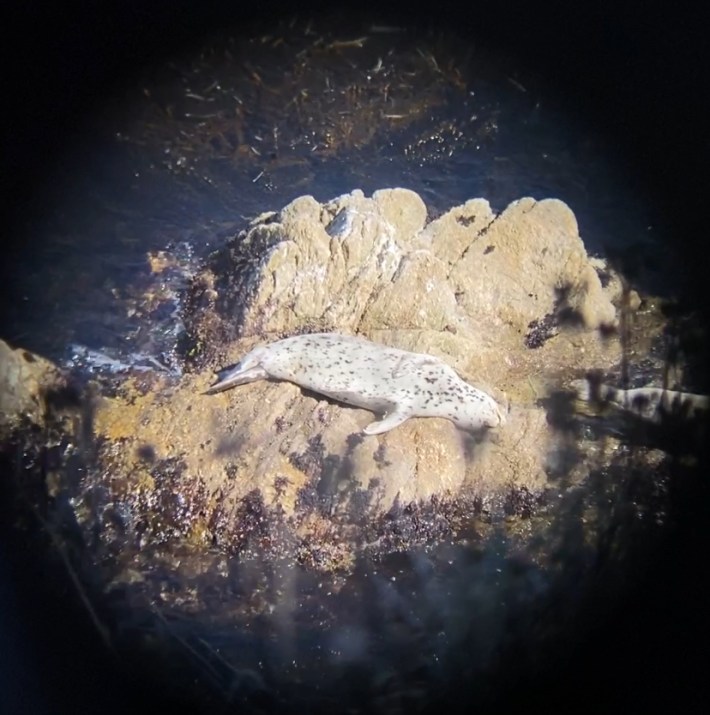
I was in Monterey on a short vacation, and my partner and I were hiking a loop in Point Lobos State Park on a frigid summer day. We'd been squinting into the blue bays in search of sea otters, which were numerous and expectedly charming, opening crabs to eat, grooming their plush coats, and dozing off. At one checkpoint, we realized we could borrow binoculars for free from the park (in exchange for leaving our car keys as collateral), which meant that for the rest of our hike, we saw distant creatures in high definition. We loved every otter, every pelican, and even rust-colored mosses high up on a branch. But we ceased hiking entirely when we stopped by the edge of the cliff and saw three perfect seals sunning on a rock. We traded the binoculars back and forth as we watched them snooze, yawn, and occasionally get splashed by a wave.
At one point I was holding the binoculars when I gasped: One of the seals, its coat a charming salt and pepper, had begun peeing, and I watched its perfect arc of a stream empty into the ocean. Was there a rainbow peeking below it, or had I conjured one in my mind? No matter. It was just like a fountain, dazzling in its brevity, and I thought to myself that I had never seen anything so perfect in my whole life, and perhaps I never would again. - Sabrina Imbler
No Other Land
The most interesting movies of this year were all about the uncertainty of our future. Bertrand Bonello's The Beast conjured images of a future that allows us to erase trauma, and in doing so maybe erase ourselves, as well as portraying the best depiction of modern life since Twin Peaks: The Return. Francis Ford Coppola's Megalopolis was a beautiful, confounding disaster about the fears and anxieties of a nation falling apart, and the allure of the always-out-of-reach utopia that we can't quite build.
But the documentary No Other Land, which tells the story of the occupied West Bank community Masafer Yatta and its destruction by Israeli forces, shook me the most and continues to linger as a potent exposé about the extermination of the Palestinian people. No Other Land was shown at the New York Film Festival, where I first covered it. It currently has no distributor, so it's hard to know if many of you will get to see it. It is an indictment of the Western world that dares to portray the Palestinian people as human beings who laugh, love, dream, and explain their righteous fury in plain words. The movie was filmed by an Israeli-Palestinian collective, and the relationship between the Palestinian activist Basel and Israeli journalist Yuval is also at the heart of the story, dramatizing the divide and the way their relationship is affected by the violence committed. It's a gripping story, but also a portent of a conflict that seemingly has no end in sight. - Israel Daramola
Oh, Mary!
Depending on your TV watching tastes or how refined your algorithms are, you likely have seen Cole Escola somewhere in the last six months. It feels rare for a theater star to get that kind of spotlight, especially someone not headlining a massive revival or a big, spendy musical that was Tony-bound from the minute it went into previews. Escola's show Oh, Mary! went from being an unabashedly queer comedy selling out crowds in the West Village in January, to opening on Broadway by the summer.
How do I even describe it? Oh, Mary! is a revisionist history set against the final days of the Civil War ... but campy as hell? You see, Mary Todd Lincoln (Escola) was actually a raging alcoholic and catty misanthrope who only wanted to get back to her career as a cabaret singer, if not for her dour husband, the 16th president of the United States, who may or may not be battling his own sexually repressed urges. As excited as I was for this show, I was not prepared for how perfectly deranged it was from the jump. Escola's writing gave me everything I loved in classic sitcom hijinks: zany schemes, breathless pacing, and the leads meeting and rising to each other's energy. It just gets more insane and messy as it spins out toward the couple's infamous date at Ford's Theater, all in a brisk 80 minutes. I was cackling so hard, I was crying. It felt like the first time I got to watch Lucille Ball or a Mel Brooks movie as a kid, comedy that unlocks your brain and throws it in a blender, leaving you giddy and spent. - Justin Ellis
 MadS
MadS
In November, I took a chance on a horror movie called MadS. It’s about a group of cool French teens whose night of partying is interrupted by the fall of civilization. Some scary thing—a disease, a drug, or possibly a biochemical weapon—goes exponential-spread mode through their town, always a step or two ahead of the extremely frightening and heavily armored agents pulling emergency clean-up duty. The symptoms of this infection are like a much more interesting version of whatever pathogen broke out at the beginning of 28 Days Later. You could almost think of this movie as filling in some of the 28-day gap that follows the opening sequence of that movie, except that the infected in MadS are way fuckin’ cooler than the barking red-eyed rage monsters of that one. Instead of being fast zombies, the infected in MadS are cunning and devious and bizarrely ecstatic, and retain some critical instinct for short-term self-preservation, which makes them so much more chaotic as both a narrative device and screen presence.
The choice to give the infected some real character was a rewarding one. They’re weird, dynamic, and always very interesting, and by focusing on their experiences, the movie gives its lead actors space to really Go Off in a way that lead actors normally do not get to do in disaster movies. A handsome young actor named Milton Riche plays Romain, a cool and popular kid whose planned evening of partying gets off to a rocky start when he picks up an ill and injured stranger in his father’s beautiful restored convertible. Various clues suggest that this was a pretty bad idea, but things go far sideways before Romain can wrap his drug-addled mind around them. A deeply freaked Romain winds up headed to a house party, where the film starts deploying its handful of genuinely gorgeous visual effects to suggest that things are Not Right.
Riche is great to look at, and the movie holds him to a relatively narrow band of modes in his depiction of Romain’s transformation. Things really take off, both within the narrative and in the storytelling, when the movie’s focus shifts to Anais, played by Laurie Pavy. I can’t even guess where writer-director David Moreau found his actors—none of these people appear to have any real credits to their names—but Pavy is a damn revelation. The story requires a lot of her, emotionally and especially physically. Her character goes from being a normal-ish teen partygoer to a confused and frantic refugee to an incredibly frightening agent of destruction without so much as a single costume change. It rules.
Once MadS gets some recognition—it doesn’t yet have a Wikipedia page but it’s gotten some buzz—attention will probably focus on Moreau’s handheld one-take presentation. I don’t usually give a shit about this kind of visual gimmick; long takes are often distracting to me, and very often seem to have been deployed so that a director can remind the viewer of who is in charge. MadS doesn’t suffer too much from the choice, except for certain early sequences evidently having no great plan for how to fill minutes that might otherwise have been snipped out by an editor.
There’s a sequence in the second half where the uninterrupted flow of action really works. Anais is on the loose, feral and hunted, a cackling blood-splattered fiend. She hijacks a bicycle in spectacular fashion and heads away from the sounds of her pursuers. To this point in the movie the contagion has seemed like a dangerous but relatively small thing, snaking from acquaintance to acquaintance via direct contact, destroying a social circle and frustrating a containment effort but not yet threatening the wider world. Suddenly, as Anais pedals through a darkened town, it becomes clear by what is visible over her shoulders that this has already become a much larger catastrophe, huge enough that the viewer is invited to unload some of their mounting angst. There is no point in hoping any longer that this particular vector can be contained. The scary outbreak first had the effect of freighting every interaction with terrifying context, but now it’s come full circle, obliterating the recently urgent social meaning of any particular exchange, of care or violence or splattered mouthfuls of random blood. Survival, at the individual level, has become intensely and utterly a personal matter. - Chris Thompson
Killing It
Part of the reason I started writing stuff down in my dumb little book was for work. I reached the end of 2022 and realized that I remembered basically nothing that I’d seen that year; I had to reach back to the very beginning of the year to find a suitable thing to write about for this, and landed on a damn TV show. I wanted to watch movies again, and just as much I wanted to remember that I had watched them.
My book tells me that I have watched 51 movies this year, not including the ones I watched for my Hallmark movie podcast, and I have no choice but to agree. I remember most of them fondly: I stepped up my watchlist game on the free streamers, I received a Criterion Channel membership as a gift and made good use of it, and I have my thoughts on these written down in the absolute shittiest handwriting imaginable. I saw some lovely films in the theater with my wife this year—when someone else is watching with me, I am up for that kind of thing—and also watched stylish, bleak political thrillers from the 1970s and 1980s after she went to bed. I saw William Friedkin’s magnificent and harrowing Sorcerer in a theater with a big sound system and left, quite happily, feeling like I’d been dribbled around like a basketball for two hours. Anxieties I did not allow myself to utter aloud about the political future of this country are easy to map across the movies I watched—William Richert’s Winter Kills is the funny version of that collapse, Costa-Gavras’s Missing and Z lean further into disgust at the banal and stupid brutishness of it all, Philip Kaufman’s Invasion Of The Body Snatchers is so steeped in high-'70s aesthetics that, lost in Donald Sutherland’s chunky cardigans, I very nearly forgot to have a bad time. I recommend all of these, but somehow I am going to write about a television show again.
The first time I wrote about a TV show for Defector's year-end list, it was Lodge 49, which I still think is one of the signal achievements of the medium. I would not say the same about Killing It, which has aired two short seasons on Peacock in 2022 and 2023. The story it sets up—how a rich man named Craig (Craig Robinson) made his fortune, after starting out with nothing—more or less tells itself over the course of 18 episodes, to the point where it would be fine if it ended where it seemingly has. But it would be a shame, too, because I don’t know that I’ve ever seen a sitcom that managed to be this funny and this disgusted at once, let alone be as angry about all the degrading, predative forces currently at work in the culture and conversant enough with their particulars to make all the gags about them land. It’s a sitcom that reliably hits the beats it needs to hit—it was created by the Brooklyn Nine-Nine writers Luke Del Tredici and Dan Goor, and moves at the bracing clip you’d expect from graduates of The Michael Schur University—but it is reliably nastier and darker than I expected, always funny, and very often funny in surprising ways.
“Dark” can mean many things when applied to this sort of comic project, but while there are plenty of shock gags you might expect, this one is legitimately dark. Craig’s attempts to make it by outcompeting his fellow strugglers in South Florida’s hustle economy take him to all the dark places, literal and figurative, in which that culture’s currents tend to pull. He’s joined in this awful, thwarted work by a series of similarly desperate and mostly temporary partners. The show gets a great deal of mileage out of the Australian actress Claudia O’Doherty saying the word “Kia,” but she gets many of the show’s biggest laughs in a variety of different ways. All of them are beset in this effort by systems that don’t work either by design or due to administrative atrophy, and much more urgently by rich predators and even more desperate fellow strivers. Tim Heidecker’s performance as an ulcerous dealsmith named Rodney Lamonca is some of the funniest work he’s done anywhere, and the supporting cast is reliably two ticks better than you’d expect: That vampiric debt collector is actually played by Jackie Earle Haley, not someone who looks like him; if you are someone who says “hell yeah” when Timothy Simons, Kyle Mooney, Carmen Christopher or D’Arcy Carden shows up in something, you will be saying “hell yeah” a lot.
If it feels inevitable that streaming TV would just become a jankier, more expensive recreation of cable television, on terms that are worse for both creators and consumers, it is because that outcome feels increasingly inevitable all up and down the culture at this moment. But even if this is all we ever get of Killing It, it’s a compelling proof of concept of what might have been: a show that is too angry and acidic for network television, made at a moment when cable channels are clamoring to admit themselves to hospice care, by people who both know what they’re doing and are mad about the right things. So many of the old movies I watched were defined by a sort of grim and furious disgust; it was striking, if not very comforting, how contemporary they felt. Killing It vibrates with the same unease, but is current in some bracing ways. I saw a lot of great movies this year, but nothing surprised me more than this. - David Roth
Bomani Jones's The Right Time
A thrice-weekly conversation on sports, politics, and culture that feels like Defector should either buy it, rent it, or seize it in a bloody coup. Bomani Jones, who long ago made his bones as one of the three or four smartest and most original people in the overtraipsed world of sport-plus commentary, does an hour on whatever strikes his fancy, rather than that of some faceless producer with instructions from some suited jackal with a narrow but commercially useful playlist that normally begins and ends with the Dallas Cowboys. His guests, including semi-regulars like Mina Kimes, Howard Bryant, Joel Anderson and Domonique Foxworth, neither shout nor gesticulate nor perform semi-precious acts of self-promotion, yet keep up with Jones's peripatetic brain on a variety of subjects that burst and fade at irregularly scheduled moments and are fraught with thoughts that force the viewer/listener to think as well. True, he is bankrolled by an online gambling consortium, as is the way of all things these days, and he does have a serious Detroit Lions jones, but it is at its best three hours of intellectually worthwhile brain dancing in a wall of gray-on-beige propaganda that we should steal on a promise that he won't have to plug parlays as part of the production cost. - Ray Ratto
A Taxi Driver
I first learned about Jang Hoon’s A Taxi Driver because my husband happened to watch it on a plane and said afterward the film left him almost crying in his aisle seat (he never cries in front of people). A Taxi Driver is based on the real-life story of a German journalist and a Korean taxi driver who, in a few harrowing days, helped to tell the world about the 1980 Gwangju Uprising. So this month, when Koreans took to the streets of their capital to protest President Yoon Suk Yeol's brief but shocking martial law decree, followed by more protests demanding Yoon's impeachment, I decided to watch it myself. It ended up being the best thing I watched this year.
The thrust of A Taxi Driver is that thanks to a tip, reporter Jürgen Hinzpeter needs to get from the capital Seoul to the southwestern city of Gwangju, where the country's military dictatorship is responding to pro-democracy protests with deadly violence. (The official number of people killed in Gwangju during the uprising is about 200, though it is likely much higher.) But a German journalist carrying a video camera can't just stroll into a blocked-off Korean city swarming with military officers who are already preventing Korean media from reporting on their actions. He needs help. Specifically, a taxi driver.
Enter Kim Sa-bok—played by Song Kang-ho of Parasite and Snowpiercer fame—a working-class, widowed father of a young daughter. He takes some creative liberties to get the job driving Hinzpeter to Gwangju and back, because Hinzpeter is offering a lot of money for the ride and Kim needs to pay his rent. From there, the movie is two stories intertwined at once: the unfurling narrative of Hinzpeter and Kim discovering the violence of the attempted suppression of the pro-democracy protests (suppression that went on with the U.S. government's approval), and Kim wrestling with his duties as a father who needs to provide for his daughter, but also a member of Korean society who wants everyone to know what happened.
The entire movie rests on Kim and his moral wrangling with a series of questions to which there are no easy answers: How much do you owe your family, and how much do you owe your fellow countryman? Without Kim’s cab and his ability to speak English, there's no way for Hinzpeter's footage to get out to the rest of the world.
In many movies about journalism, the journalists are the heroes, with everyone else a side character. In A Taxi Driver, Hinzpeter gets his due but, as the film tells it, he never would have gotten into Gwangju, let alone been able to report, without Kim. It's Kim's movie, with him as protagonist, and his decisions being critical to the world learning about Gwangju. (The film also includes a scene in which Hinzpeter says he got into journalism for the money, a deft way of making clear it does not see him as any higher or lower than the Seoul taxi driver who took this job for the same reason.)
It's fitting that when Kim does agree to the dangerous drive back to Seoul with Hinzpeter and his footage aboard, he frames his decision as one about work—a responsible taxi driver would never leave behind a passenger before reaching the destination. But sometimes our jobs can mean so much to so many, even people we will never know or meet. - Diana Moskovitz
Love Island: USA, Season 6
I entered this past summer with one goal: to finish a single season of Love Island. Yes, I was moving apartments, living by myself for the first time, starting a new job, and training for a powerlifting competition. But what really mattered to me was Love Island. If it’s not already clear, I love reality TV; most of the new television I consume is unscripted. On paper, Love Island is exactly my type, but until this summer I’d never managed to finish an entire 30-plus episode season. To give myself a fighting chance, I started both the U.K. and American versions of Love Island at the same time.
I went in expecting what had long been confirmed by more loyal viewers of the Love Island universe: that the British version would soon far outstrip her younger American sister. Instead, I –and seemingly everyone else in America–spent the summer enthralled. It wasn’t just the uniquely enduring relationships that unfolded, though it’s notable that three of the four final couples are still going strong despite no shortage of drama in the villa. It was that, as Lovia Gyarke wrote in The Hollywood Reporter, “this particular set of islanders seemed immune from the usual unscripted television fraudulence; their sincere reactions to romantic heartbreak and platonic betrayal accurately reflected the emotional rollercoaster of modern dating.”
I suspect that this cast went into the villa with the same understanding that I did, that soon they’d be overshadowed by their British counterparts. It would explain the lack of self-consciousness that made these islanders so disarmingly winsome. There’s a huge difference between going on a spin-off Peacock reality TV show and going on the most-watched streaming original series. Whatever it was, I doubt we’ll see it again, especially now that Season 6’s cast has benefited so richly. But for that glorious summer, there was no more beautiful phrase than “I got a text.” - Rachelle Hampton
